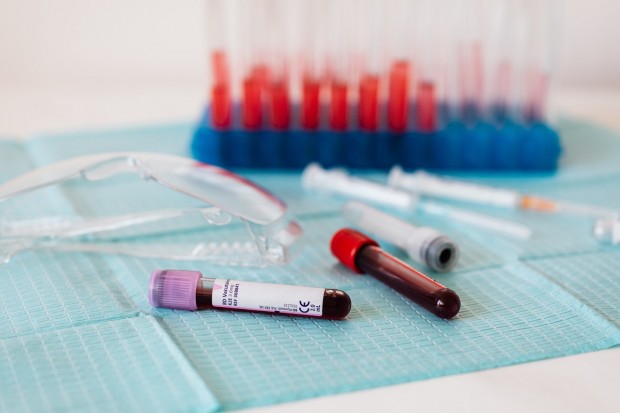Photo : Karolina Grabowska from Pexels
Researchers rely on ELISA to detect and measure antigens in samples because of its robust nature, high degree of sensitivity, and ease of performance. However, it is possible to run into certain issues that cause ELISA-based experiments to produce inaccurate or irreproducible results. Accuracy is the degree of closeness between the obtained experimental value and the accepted true value under the experimental conditions. Reproducibility is the amount of variation between different samples within the same run of an assay or the variation between different assays performed on multiple days or by different researchers.
The two primary factors that impact accuracy and reproducibility are non-specific binding and cross-reaction. Non-specific binding (NSB) occurs when substances other than the target reagents absorb into the plate, causing high background noise or false signals. Adding a blocking buffer is a crucial step for saturating the unoccupied wells of the plate and preventing NSB. Cross-reaction refers to any unexpected interactions between an antibody and non-specific analytes and is common among indirect ELISAs when the enzyme-labeled secondary antibody or an enzyme-labeled avidin against the detection antibody reduces the selectivity of the assay.
Here are some of the most common ELISA issues experienced by researchers, alongside their potential causes and corresponding solutions:
Weak or Low Signal Intensity
-
Incorrect storage of components. Double-check the storage conditions on the label. Most ELISA test kits must be stored at 2-80 degrees Celsius.
-
Improper preparation or addition of reagents. Confirm protocol to verify that reagents were prepared to the correct dilution and added in the proper order.
-
Expired, degraded, or contaminated reagents. Check the expiration dates on reagents and do not use them past the expiration date. Replace any reagents that are expired, degraded, or contaminated with new reagents.
-
Reagents at the wrong temperature. All reagents must be kept at room temperature for at least 15-20 minutes before beginning an assay.
-
Overexposure of fluorescent reagents. Intense light can result in photo-bleaching by decomposing the fluorophore (fluorescent dye or protein). Protect the reagents from light exposure to generate effective signals.
-
Assay components require further optimization. An assay component may be at a limiting concentration that reduces the overall signal.
-
Substrate requires further optimization. The substrate may not be sensitive enough to detect the generated signal or the standard curve may not be appropriate for the given sample. Use a more sensitive substrate or concentrate the sample.
-
Scratched or damaged wells. Touching the wells with the pipette during dispensing or aspirating into and out of wells or washing can scratch them. Follow the correct pipetting technique.
-
Plate read at incorrect wavelength. Use the recommended wavelengths and filters and confirm that the plate reader is set for the substrate you are using in the assay.
Excessive Signal Intensity
-
Incorrect preparation of dilutions. Confirm you used the correct pipetting technique and double-check your calculations.
-
Excessive incubation time. Follow the recommended incubation time included in your ELISA test kit.
-
Well-to-well contamination. Reused plate sealers or failure to use plate sealers increases the risk of contamination across wells. Cover plates with plate sealers during incubation and replace them with fresh sealers every time you open them.
High Background Noise
-
Exposure of substrate to light. Store substrate in a dark place and limit light exposure while running the assay.
-
Inadequate concentration of blocking buffer. The blocking buffer should bind to all sites of non-specific interaction while impacting the target epitope for antibody binding and detection. Optimize your blocking buffer solution by increasing the concentration.
-
Excessive amount of enzyme conjugate. Optimize the enzyme conjugate. You can accomplish this by preparing different concentrations in the standard diluent according to the proper range for the substrate, applying an equal volume of each one to the plate, performing the ELISA, and checking for signal-to-noise ratio.
Poor Linearity or Dynamic Range of the Standard Curve
-
Poor variation between replicates. This can result from an incorrect concentration of reagents added to wells. Follow the correct pipetting technique. Measure all samples and standards at least twice to mitigate this issue.
-
Incorrect stock solution. Using the wrong concentration can cause standards to be under-or over-diluted, which shifts the standard curve out of range: Double-check the solution concentration and your dilution calculations.
-
Degraded stock solution. Dilute and store stock solutions according to protocol and double-check your calculations.
A captured antibody that does not bind to the plate can also result in weak/low signal intensity and poor standard curves. This can occur when the antibody lacks sufficient binding affinity towards the target. If you are coating a plate yourself rather than purchasing a kit with a pre-coated plate, make sure you are using a plate specifically designed for ELISA, not a tissue culture plate. Confirm correct preparation and incubation time for coating and blocking.
* This is a contributed article and this content does not necessarily represent the views of universityherald.com









